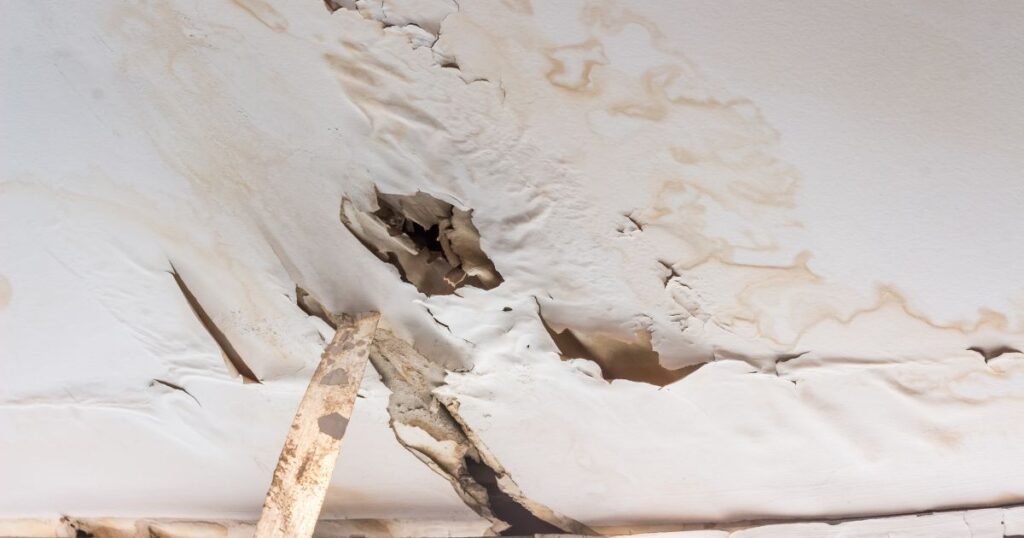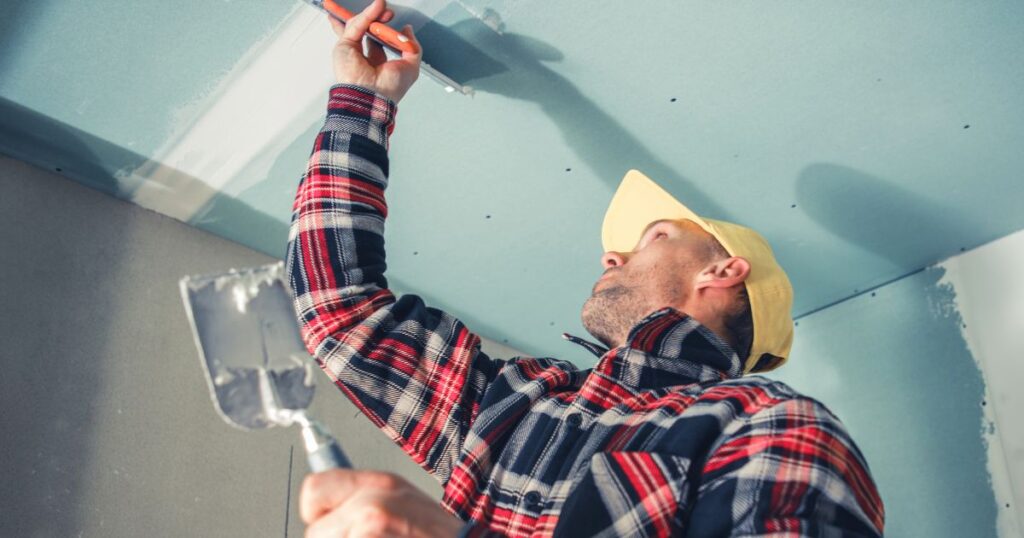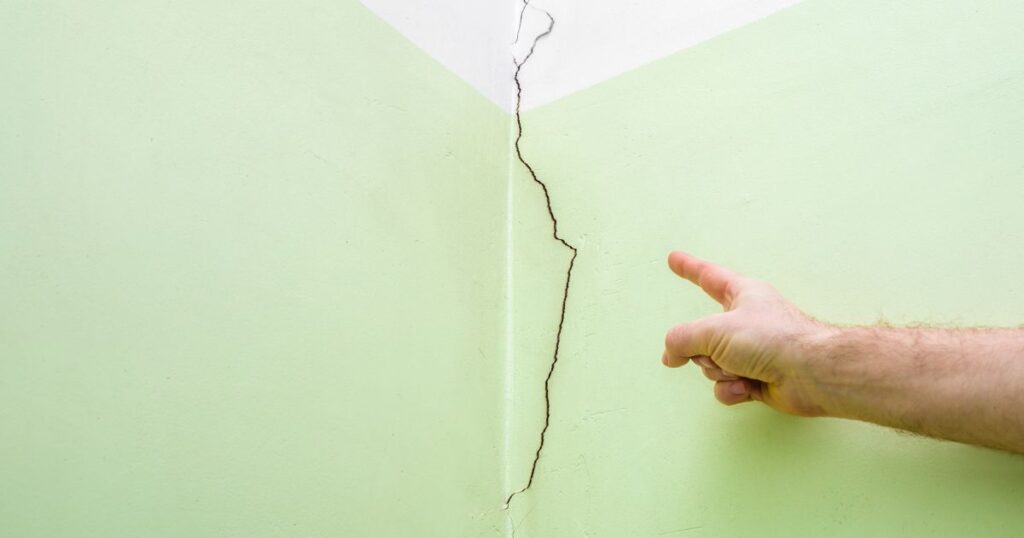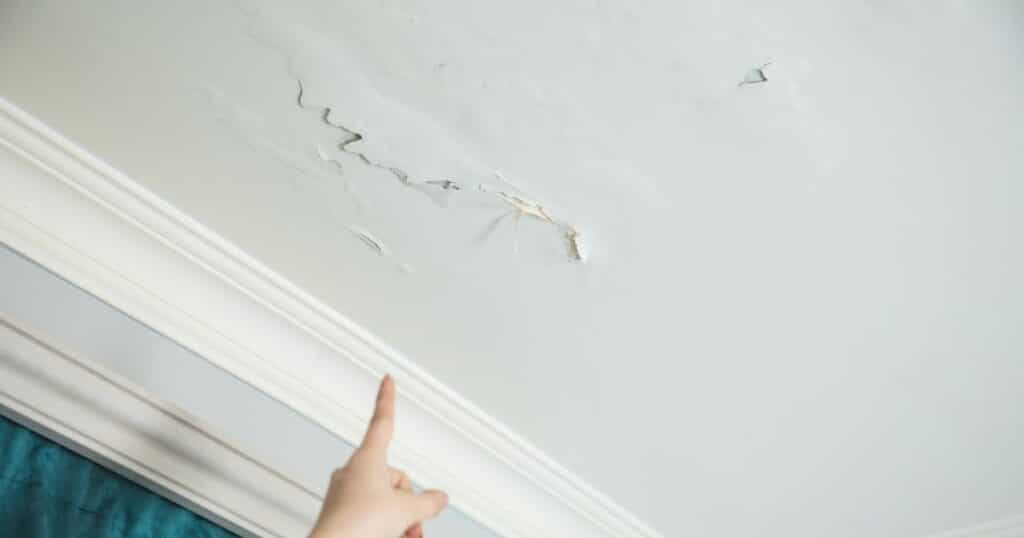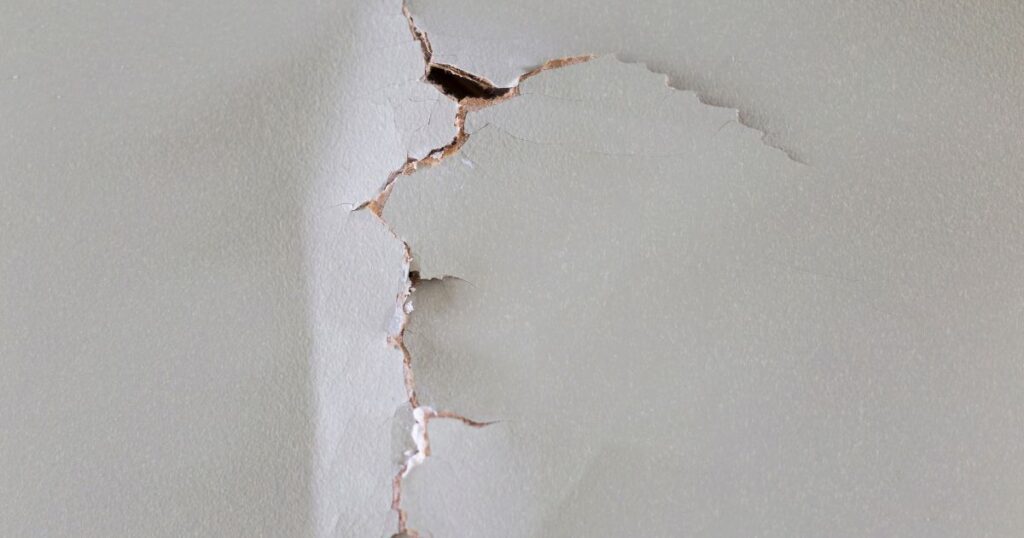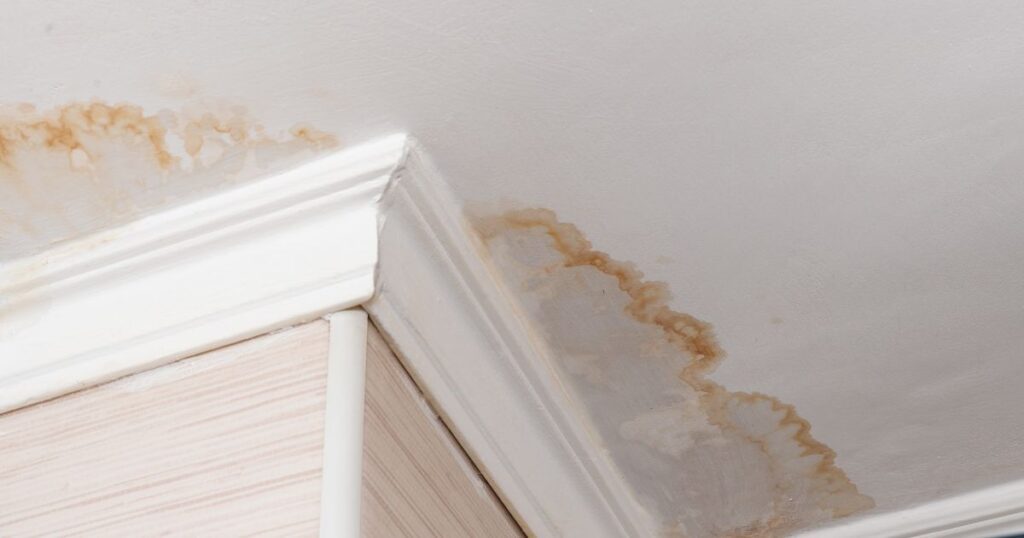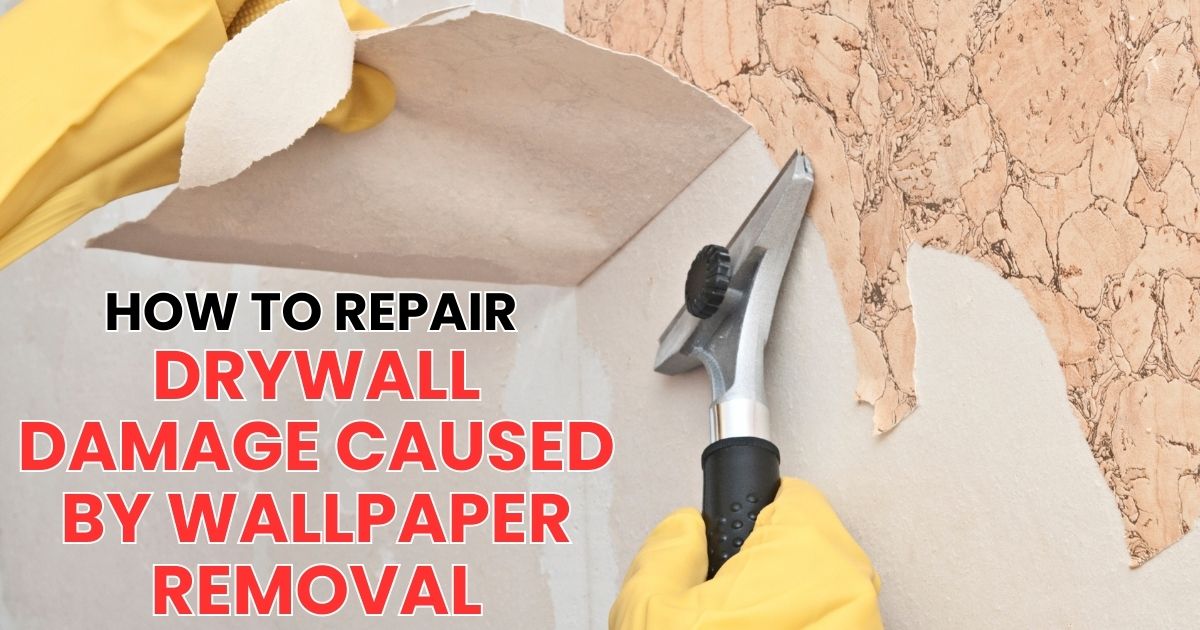
Wallpaper removal aftermath: A common problem
Ah, the joys of removing wallpaper. Such a tedious task, but it’s worth it to give your home a fresh look and feel. But what happens when you finally remove that stubborn wallpaper and discover that your drywall now looks like Swiss cheese?
Ugh, the frustration! This is a common problem in the world of home renovation and one that can be quite daunting to fix.
But fear not! With the right techniques for repairing drywall damage caused by wallpaper removal, you can restore your walls to their former glory.
Learn how to repair drywall damage caused by wallpaper removal with our detailed guide. Keep your walls smooth and even for painting or re-wallpapering.
The importance of repairing drywall damage
Now, some may argue that repairing drywall damage caused by wallpaper removal is unnecessary. After all, if you’re just going to re-wallpaper or paint over it, what’s the point?
Well, let me tell you – if you want your wall surface to be smooth and even, then repairing any damage is crucial. Patching drywall from wallpaper damage doesn’t just improve the aesthetics of your walls – it also prevents potential problems down the road.
Imperfections in your wall surface can cause paint or wallpaper to adhere improperly, resulting in peeling or bubbling. Plus, leaving damaged drywall unaddressed can weaken its structural integrity over time.
So don’t skimp on this step! Applying joint compound for drywall repair is an investment in both the appearance and longevity of your walls.
The DIY vs. Professional Debate
Now, before we dive into the nitty-gritty details of how to fix drywall after removing wallpaper, let’s address an important question: should you attempt this repair yourself or hire a professional? Of course, there are pros and cons to each option.
DIY spackling damaged drywall may save you money upfront and give you a sense of accomplishment from tackling a home improvement project. However, if you don’t have experience with repairing drywall or using joint compounds, you risk making the damage worse or creating new imperfections.
On the other hand, enlisting the help of a professional for drywall repair techniques may cost more, but it ensures that the job is done right the first time. Plus, if there are any issues down the road, you have someone to hold accountable.
Ultimately, the decision is up to you and your comfort level with DIY home improvement projects. Just remember that there’s no shame in admitting when a certain task is beyond your skill set!
What You’ll Need
Assuming you’ve decided to go the DIY route for repairing damaged drywall due to wallpaper removal, let’s talk about what tools and materials you’ll need. First and foremost, you’ll need a joint compound – also known as spackle – for patching up any holes or gouges in your wall. You can find this at most hardware stores and it typically costs under $10 per quart.
Next up: a putty knife. This will be used to apply and smooth out the joint compound on your wall surface.
You can buy these in various sizes at most hardware stores. Other necessary supplies include sandpaper (to smooth out any rough patches), primer/paint (to cover up repaired areas), and a sanding block (for easier sanding).
Assessing the Damage
Inspecting the Damaged Area
So, your wallpaper removal project didn’t go as planned, and now you’re left with a mess of damaged drywall. Don’t fret because before you can begin to fix it, you must first assess the damage. Inspect the area thoroughly and determine how deep the damage goes.
If it’s just a small hole or crack, then repairing it should be fairly simple. But if there are large holes or gouges in the wall, then more extensive repairs may be required.
Determining the Extent of Damage and Identifying Underlying Issues
Once you have assessed the extent of the damage, it’s important to identify any underlying issues that may have caused it. For example, if there is moisture present in your walls due to leaks or condensation, this can cause the drywall to weaken and crumble over time.
Structural issues such as settling or shifting your home’s foundation can also result in drywall damage. Determining these underlying issues is critical because simply patching up damaged drywall won’t prevent further damage from occurring down the line.
Without addressing these root causes, any repairs that you make will only be temporary at best. When assessing your wall’s condition after wallpaper removal, carefully inspect all areas where wallpaper was peeled away, including seams and edges near trim and doors.
Look for discoloration or staining on drywall which could indicate water damage and/or mold growth underneath wallpaper adhesive residue. : Don’t just patch up damaged drywall without identifying any underlying issue that caused it in order to prevent further damages from reappearing later on.
Common Mistakes
Before we move on to preparing for repair after assessing your wall’s condition post-wallpaper removal mishap.. here are some common mistakes people make while assessing damage: 1. Not inspecting the damaged area thoroughly or leaving the underlying issue unresolved. 2. Assuming that patching up damaged drywall without addressing an underlying issue will fix everything.
3. Not taking appropriate precautions while removing wallpaper in the first place, such as using heat guns or solvents that can damage drywall even further. Don’t make these mistakes and your drywall restoration process will be a success!
Pro Tip: Hire Professional Drywall Damage Repair Services
If you’re unsure about assessing damages yourself, don’t hesitate to hire a professional drywall repair service. These professionals can provide expert advice and recommendations on how to address any issues with your drywall. Not only will they help you assess the extent of damage, but they can also provide tips and techniques on how to repair it properly.
In addition, they have access to specialized tools and materials that may not be available to ordinary homeowners. By hiring professional services for repairing damages caused by wallpaper removal, rest assured you’ll prevent future damages from occurring down the line as well.
Take your time when assessing any type of damage caused by ineffective wallpaper removal. By identifying any underlying issues and approaching it with care and patience during the restoration process – you’ll save yourself a lot of money, time, and headache in the long run!
Preparing for Repair
Gather the Necessary Tools and Materials
Before jumping into any DIY project, it’s important to gather all the necessary tools and materials. For patching drywall from wallpaper damage, you’ll need a few key items – joint compound, sandpaper, putty knife, and primer/paint. Don’t skimp on these materials – investing in high-quality products will pay off in a smoother and more long-lasting finish.
Prepare the Damaged Area
Once you have your tools ready, take some time to prepare the damaged area before beginning any repairs. This involves removing any loose debris or wallpaper remnants that may be lingering on the drywall surface. Wallpaper residue removal can be tedious work, but it’s absolutely crucial for achieving a smooth finish when repairing drywall after wallpaper removal.
When spackling damaged drywall, use caution not to dig too deeply into the wall material – this can cause further damage and make it more difficult to achieve a seamless finish later on. Instead of using brute force to scrape away residual wallpaper glue or backing paper, consider using a scraper or putty knife with a gentle touch.
Safety First!
Before beginning any repair work on your walls, be sure to take necessary safety precautions. Wear proper eye protection and dust masks when sanding down rough patches or applying joint compounds for drywall repair.
If you’re new to fixing drywall imperfections after wallpaper removal or patching drywall from wallpaper damage in general, consider practicing your technique on a scrap piece of drywall material first before diving into repairs on your walls. This can help prevent costly mistakes that further damage your walls.
Keep Your Workspace Tidy
Keeping your workspace tidy throughout the repair process can help ensure successful results. Use drop cloths or old towels to protect your floors and furniture from dust and debris. Clean up any excess joint compound or other materials as soon as possible to prevent them from drying where you don’t want them and increase the level of aggravation you feel during the process.
Repairing Small Holes and Cracks
Applying Joint Compound for Drywall Repair
If you’ve ever had to deal with drywall repair, then you know that applying joint compound is an absolute pain in the neck. But it’s a necessary evil if you want to get your walls looking as good as new again.
The key is to use a putty knife to apply the joint compound evenly over the damaged area. Don’t use too much pressure, or you’ll end up with lumps and bumps that will be even harder to sand down later.
Patching Drywall from Wallpaper Damage
When it comes to patching drywall from wallpaper damage, there are several different techniques you can try. One popular approach involves using mesh tape and joint compound. First, cut a piece of mesh tape that’s slightly larger than the hole or crack in your wall.
Then, use a putty knife to apply a thin layer of joint compound over the tape. Allow it to dry completely before adding additional layers as needed.
Finishing Touches for Drywall Restoration
Once your patched drywall has dried completely, it’s time to sand down any rough spots or imperfections using a fine-grit sandpaper or sanding block. Be careful not to over sand, or you’ll end up with an uneven surface that will be even more noticeable once you paint over it. After sanding, apply primer before painting over repaired areas for best results.
Tips for Repairing Drywall Imperfections after Removing Wallpaper
When repairing drywall imperfections after removing wallpaper, keep in mind that this is not an exact science. There may be some trial and error involved before you get the hang of it.
But don’t let that discourage you from trying! With enough practice, anyone can become a DIY drywall repair expert.
DIY Drywall Repair Tips
If you’re attempting DIY drywall repair for the first time, be sure to start with small projects so you can get a feel for the process without getting overwhelmed. Watch instructional videos online or read articles like this one to learn more about specific techniques and tools that can make your life easier.
And don’t be afraid to make mistakes! Learning from your failures is an important part of becoming a skilled DIYer.
Repairing Large Holes
Cutting Out a Square Around Large Holes: A Bold Move That Pays Off
We’ve all been there – you start removing wallpaper, and suddenly, there’s a gaping hole in your drywall. Don’t panic!
With a few simple steps, you can repair it yourself. The first step is to cut out a square around the hole.
Yes, it may sound scary, but trust me – this is the best way to ensure that your patch is secure and won’t fall out after you’ve painted over it. To do this, use a utility knife or drywall saw to cut along the edges of the hole until you have a neat square.
This will give you a clean surface to work with when applying your patch. Be sure to remove any loose debris or wallpaper remnants before proceeding.
Creating a Patch Using Drywall or Mesh Tape: Don’t Cut Corners Here!
Once you’ve cut out your square, it’s time to create your patch. You can either use drywall or mesh tape for this step – both will work well if applied correctly.
However, I recommend using drywall if possible, as it tends to be stronger and more durable in the long run. Cut your patch so that it’s slightly larger than the hole itself.
Then, apply the joint compound around the edges of the hole before placing your patch on top. Smooth out any air bubbles or creases with a putty knife until everything is flush with the surrounding wall surface.
Applying Joint Compound Over The Patch: Patience and Persistence Are Keys.
Now that your patch is in place, it’s time to apply joint compound over it. This will help blend everything together seamlessly so that once you paint over it, nobody will be able to tell there was ever any damage there at all! Apply a thin layer of joint compound over the patch, spreading it outward with a putty knife so that it blends in with the surrounding texture.
Wait for this to dry completely before applying another layer, if needed. Be sure to sand down any rough spots until they’re flush with the rest of your wall, and then wipe everything down with a damp cloth before priming.
Finishing Touches
Sanding and Priming Drywall: The Key to a Smooth Finish
Repairing damaged drywall due to wallpaper removal can be a time-consuming and frustrating task, but it’s important to finish it off properly. After filling in any holes or cracks with joint compound, the next step is sanding away any rough spots. This process smooths out the surface, leaving you with a beautiful finish.
Start by using medium-grit sandpaper on an orbital sander to remove larger bumps or ridges in the compound. Be gentle, as you don’t want to create new divots or scratches.
Once the majority of rough spots are gone, switch over to fine-grit sandpaper for a smoother finish. The key here is patience.
Take your time and work slowly, checking your progress frequently. Sand too much in one area, and you’ll break through the compound layer into the underlying drywall paper — creating even more work for yourself.
Priming Before Painting: A Step You Can’t Afford To Skip
After all that hard work repairing gouges in drywall and fixing other imperfections caused by wallpaper removal, you might be tempted to jump straight into painting. But before you do that — stop!
You’ll need to prime first. Primer helps ensure an even finish by providing a uniform base coat that promotes better adhesion of paint.
It also seals porous surfaces like drywall and joint compound so they don’t soak up paint like a sponge. Choose a high-quality primer specifically designed for use with drywall repairs after wallpaper removal mishaps.
Apply it evenly over the repaired areas using a roller or brush made for use with water-based paints. Once it’s fully dried (read manufacturer instructions), give it another light sanding with fine-grit sandpaper before moving on to painting over repaired drywall.
Frequently Asked Questions
Will removing wallpaper damage drywall?
Removing wallpaper can potentially damage drywall if not done carefully, as the adhesive used for wallpaper can sometimes pull off the top layer of the drywall surface.
How do you fix badly damaged drywall?
To fix badly damaged drywall, you can start by removing any loose or damaged sections, applying joint compound to fill in the gaps, sanding it smooth, and then priming and painting the repaired area.
Can you paint drywall after removing the wallpaper?
You can paint drywall after removing the wallpaper. It’s important to clean the surface thoroughly, repair any damage, apply a primer, and then proceed with painting.
How do you fix drywall without replacing it?
You can fix drywall without replacing it by using a joint compound to fill in holes or cracks, sanding the repaired area smoothly, and then applying primer and paint.
Can I paint over damaged drywall?
You can paint over damaged drywall after making necessary repairs. Ensure the damaged areas are properly patched, sanded, and primed before applying paint for a smooth and uniform finish.
What to do after removing the wallpaper border?
After removing a wallpaper border, clean the walls to remove any adhesive residue, repair any damage to the drywall, and then prepare the surface by priming and painting it according to your desired finish.
Conclusion
DIY Drywall Repair Tips
Repairing drywall damage caused by wallpaper removal is not a complicated process. It requires patience, caution, and the right tools. By assessing the damage, preparing for repair, and following the steps outlined in this article, you can restore your walls to their previous state.
Remember that repairing drywall damage caused by wallpaper removal is an opportunity for DIY home improvement and not a reason to be intimidated. With some practice, you can achieve professional results on your own.
Techniques for Repairing Drywall Damage Caused by Wallpaper Removal
When it comes to fixing drywall after removing wallpaper, applying joint compound for drywall repair is key. Sanding and priming drywall also play a crucial role in achieving flawless results.
If you are dealing with gouges in drywall or other imperfections after wallpaper residue removal, spackling damaged drywall may be necessary before applying joint compound. Additionally, utilizing mesh tape when patching drywall from wallpaper damage can provide added stability.
Steps to Restore Drywall from Wallpaper Removal Mishaps
If you are considering professional drywall damage repair services due to severe damage or if DIY repairs are too daunting a task for you, then don’t hesitate but remember these tips when hiring someone: – Compare quotes from different companies
– Check customer reviews – Confirm that the company is licensed and insured
Keep in mind that restoring drywall from wallpaper removal mishaps should always be done with precision and care. Skipping steps or rushing through the process can lead to additional problems down the line.
Finishing Touches for Drywall Restoration
When painting over repaired surfaces or finishing touches for restoring your walls, use a primer before painting over repaired areas. Also, consider using choosing paint colors wisely as the wall will appear different even after prime+paint, Consider using similar shades or going a different direction completely.
With these tips for repairing drywall imperfections after removing wallpaper, you can confidently tackle any drywall damage caused by wallpaper removal. Take pride in your DIY skills and enjoy the results of your hard work!

